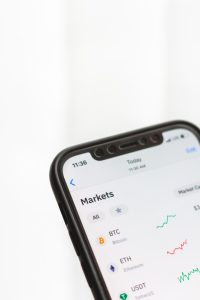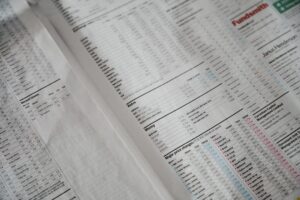Understanding Forex Terminology: A Beginner’s Guide
Forex trading can be an exciting and potentially profitable venture if you take the time to understand the intricacies of the market. However, like any specialized field, forex trading has its own set of terminology that can be overwhelming for beginners. In this article, we will provide a comprehensive guide to help you navigate through the world of forex trading.
1. What is Forex?
Forex, or foreign exchange, refers to the global decentralized market where currencies are traded. It is the largest and most liquid financial market in the world, with an average daily trading volume of $6.6 trillion. Forex trading involves buying one currency and selling another simultaneously, with the aim of profiting from the exchange rate fluctuations.
2. Major Currency Pairs
In forex trading, currencies are always traded in pairs. The major currency pairs include the following:
– EUR/USD (Euro/US Dollar)
– USD/JPY (US Dollar/Japanese Yen)
– GBP/USD (British Pound/US Dollar)
– USD/CHF (US Dollar/Swiss Franc)
– USD/CAD (US Dollar/Canadian Dollar)
– AUD/USD (Australian Dollar/US Dollar)
– NZD/USD (New Zealand Dollar/US Dollar)
These pairs are considered major because they have the highest trading volume and liquidity.
3. Bid and Ask Price
When trading forex, you will come across two prices: the bid price and the ask price. The bid price is the price at which you can sell a currency, while the ask price is the price at which you can buy a currency. The difference between the bid and ask price is called the spread, which is essentially the cost of the trade.
4. Pip
A pip, short for “percentage in point,” is the smallest unit of measurement in forex trading. It represents the fourth decimal place in most currency pairs, except for the Japanese Yen pairs, where it represents the second decimal place. Pips are used to calculate profit or loss in a trade.
5. Leverage
Leverage allows traders to control larger positions with a smaller amount of capital. It is expressed as a ratio, such as 1:100 or 1:500. For example, with a 1:100 leverage, you can control $100,000 worth of currency with just $1,000 in your trading account.
While leverage can amplify profits, it also increases the risk of losses, as losses are magnified by the leverage ratio. Therefore, it is important to use leverage wisely and understand the potential risks involved.
6. Margin
Margin is the amount of money required to open and maintain a leveraged position. It is calculated as a percentage of the total trade size. For example, if the margin requirement is 1%, and you want to open a $100,000 position, you would need $1,000 in margin.
Margin is used to cover any potential losses in a trade. If your losses exceed your available margin, you may receive a margin call from your broker, requiring you to deposit additional funds to maintain your position.
7. Stop Loss and Take Profit
A stop loss order is a predefined level at which you want to exit a trade to limit your losses. It is placed below the current market price when selling, and above the current market price when buying.
A take profit order is a predefined level at which you want to exit a trade to secure your profits. It is placed above the current market price when selling, and below the current market price when buying.
Both stop loss and take profit orders are essential risk management tools that help traders protect their capital and ensure disciplined trading.
8. Technical Analysis and Fundamental Analysis
Technical analysis involves analyzing historical price data and using various indicators and chart patterns to predict future price movements. Traders who rely on technical analysis believe that past price patterns can provide insights into future market behavior.
Fundamental analysis, on the other hand, involves analyzing economic, political, and social factors that may impact currency prices. Traders who rely on fundamental analysis study economic indicators, central bank policies, and geopolitical events to make trading decisions.
Both technical analysis and fundamental analysis are widely used by forex traders to gain an edge in the market.
In conclusion, understanding forex terminology is crucial for beginners looking to dive into the world of forex trading. By familiarizing yourself with the basic concepts and terms discussed in this article, you will be better equipped to navigate the forex market and make informed trading decisions. Remember to always practice proper risk management and continue learning and refining your trading skills to succeed in this dynamic and challenging market.






